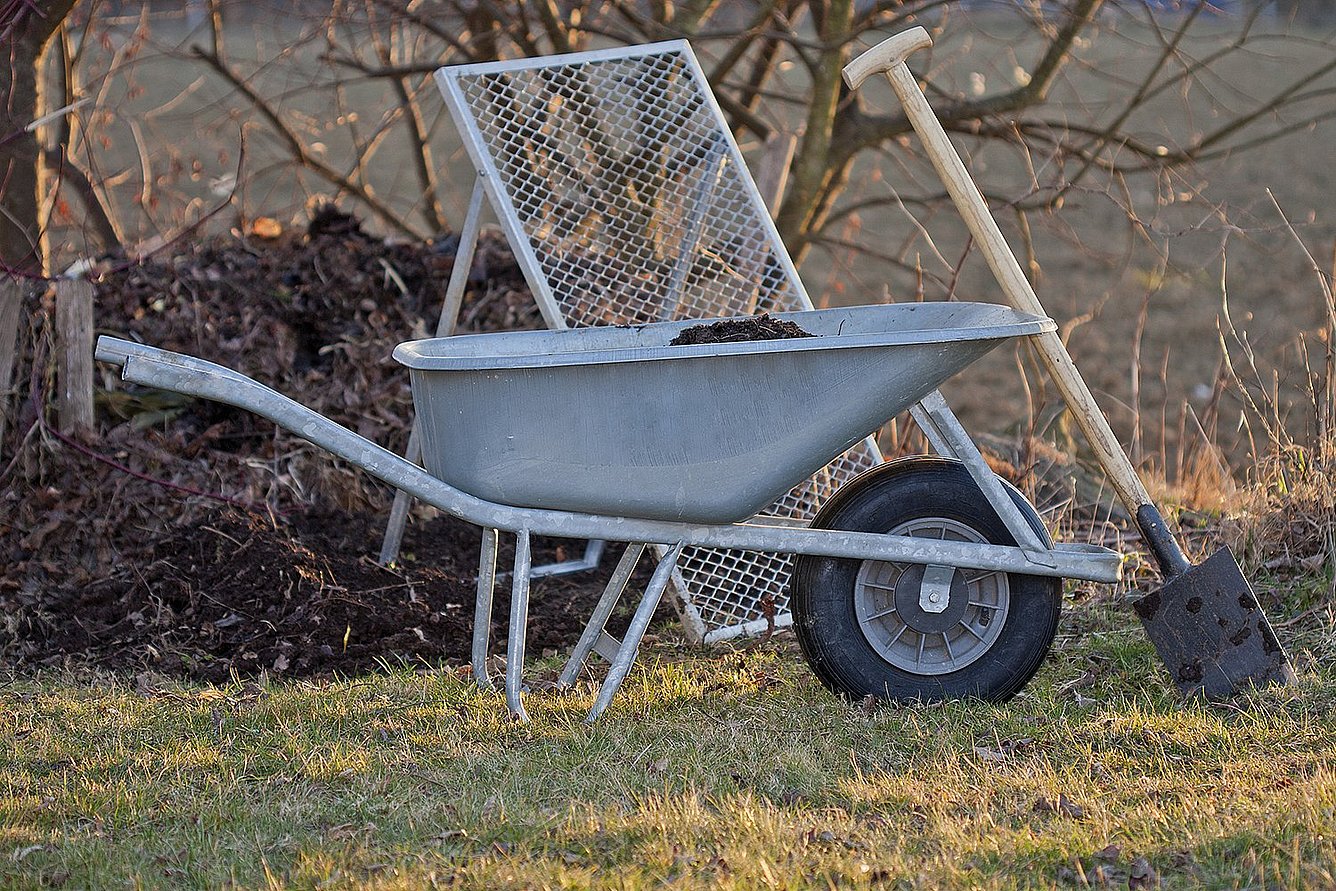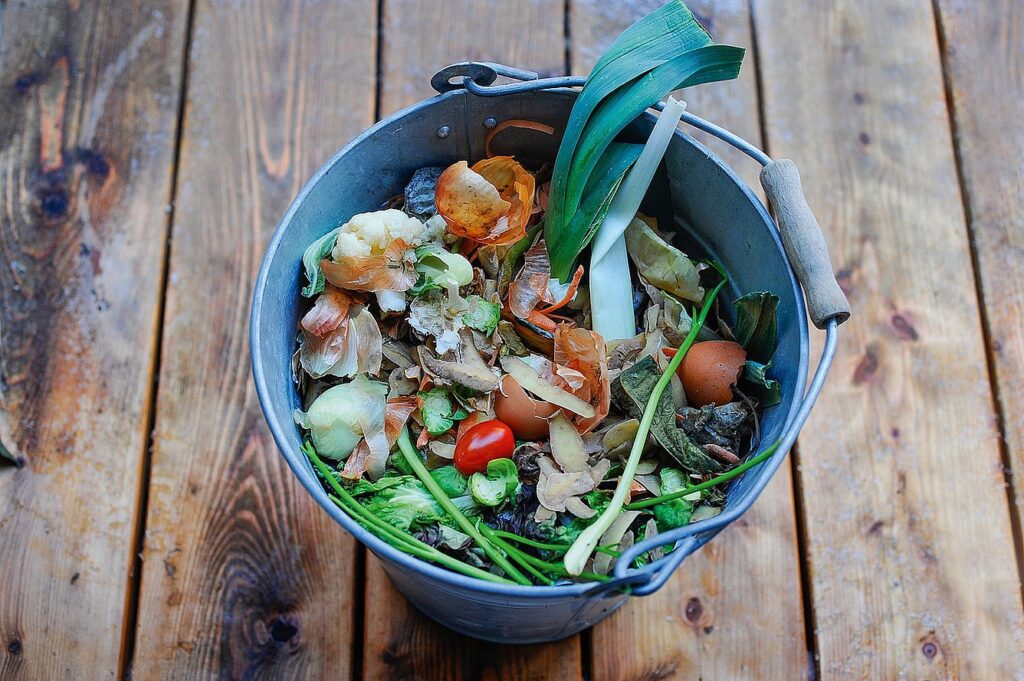It borders on a miracle: You throw your kitchen waste on a pile and after some time you get crumbly, dark humus that smells like fresh forest soil. You spread this on the garden beds – from which the plants draw their nutrients and grow magnificently until they die and become humus again after six to nine months.
A perfect cycle in which millions of living creatures do a lot of feeding work. Compost provides shelter for insects and micro-organisms and thus increases the biodiversity in your garden. Even in a small garden, there is always an opportunity to create a compost pile. This is not so difficult if you consider some things beforehand and prepare them well.
Having your own compost pile is something really fine, because it offers several advantages at once! For example, if you put kitchen and garden waste into the compost, you not only get good fertilizer, you also relieve the disposal system. What’s more, a compost pile can be created in no time.
You can, for example, simply build a pile (which is rather not recommended in the allotment garden) or build a composter out of wood, although it is easier to get one in a specialized shop – there you can find them from cheap to “compost Porsche”. It can be quite useful to run two compost piles, one that you have “in progress” and one that holds rotted or finished compost.
Alternatively, you can opt for what is known as a thermal composter. In parts, these actually offer more benefits than a regular composter.
Composting can indirectly promote biodiversity in several ways, making it a beneficial practice for the environment. Here are some of the ways in which composting can contribute to increased biodiversity:
- Nutrient-Rich Soil: Compost is a nutrient-rich organic material that improves soil quality. When added to gardens or agricultural fields, it enhances the health of the soil by increasing its fertility and structure. Healthy soil provides a more suitable environment for various plants and microorganisms to thrive, thereby promoting a diverse range of plant species.
- Microbial Diversity: Compost contains a diverse community of microorganisms, including bacteria, fungi, and beneficial insects. These microorganisms help break down organic matter in the soil, making nutrients more accessible to plants. The presence of these microbes in the soil contributes to increased microbial diversity and supports a healthier ecosystem.
- Reduced Chemical Inputs: Compost can reduce the need for chemical fertilizers and pesticides. By reducing the use of harmful chemicals in agriculture and gardening, composting can help protect the environment and preserve biodiversity by minimizing the impact of synthetic chemicals on local ecosystems.
- Habitat for Beneficial Organisms: Composting can create a favorable environment for beneficial insects and earthworms. These organisms play a crucial role in soil health, and their presence can promote the overall biodiversity of a garden or agricultural area.
- Plant Diversity: Improved soil health, thanks to the addition of compost, can support a wider variety of plants. When different plant species are present, they can provide habitat and food sources for a diverse range of animals, including pollinators like bees and butterflies.
- Carbon Sequestration: Composting helps sequester carbon in the soil, which can mitigate climate change. A stable climate is essential for maintaining biodiversity by preventing extreme weather events and habitat disruption.
- Water Quality: By enriching the soil with organic matter, composting can improve water retention and filtration. Healthy soil acts as a buffer, reducing the runoff of pollutants into water bodies, which is beneficial for aquatic ecosystems.
While composting itself directly benefits soil health and plant growth, the indirect effects on biodiversity are significant. It’s important to remember that the promotion of biodiversity in any environment is a complex interplay of various factors, including soil quality, climate, habitat availability, and local management practices. Composting is just one of the many practices that can contribute to a healthier and more biodiverse ecosystem when applied thoughtfully and as part of a comprehensive approach to sustainable land management.
Contents
The most favorable location?
The best location would be in the partial shade of a tree. In the blazing sun, the compost material dries out too much. By the way, squash plants do great in the pile and their large leaves provide the ideal sun and rain protection.
Compost worm and earthworm
The earthworm produces more humus through its eating than any other living creature. If it is unlucky, it ends up as a morsel for hedgehogs, moles or robins. Every healthy soil is crisscrossed by a labyrinth of worm passages, allowing water to drain away and oxygen to enter.
During drought, the earthworm burrows deep into the lower layer of soil, curls up and waits for rain. The compost worm, on the other hand, is slightly darker and smaller and survives only in compost. As long as these dark red worms are there, the compost is not yet ripe.

Let it mature!
Young compost, e.g. from the quick composter, has a good and gentle fertilizing effect. However, old compost (matured for up to two years) stays in the soil longer because it contains gray or black humic acids, which are broken down very slowly and only then help the plants to thrive. This permanent humus also has a positive effect on soil structure for years and improves soil fertility. If permanent soil improvement is your top priority, you should choose the conventional compost pile over the rapid composter.
Proper dosage!
Don’t overdo it, because even with compost you can overfertilize your soil. As a rule of thumb, a small bucketful of compost (about 5 kg) every two years is enough for one square meter. It is best to work well-rotted compost (= permanent humus) about 25 centimeters deep into the soil, while with young compost (= nutrient humus) a superficially worked-in layer of compost about 3 cm deep is sufficient.


